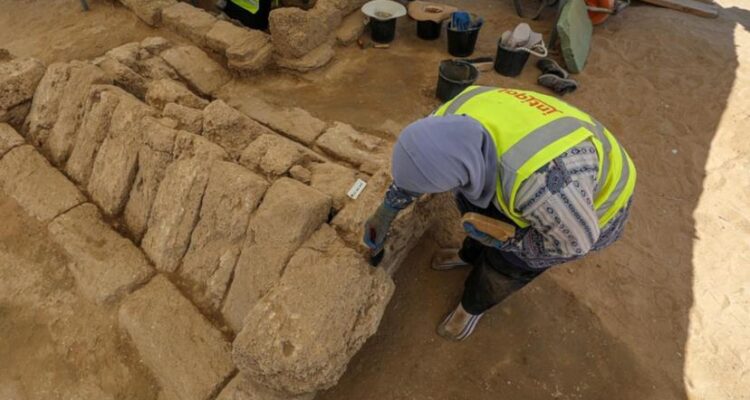Palestinian workers in the Gaza Strip have found dozens of ancient graves, including two sarcophagi made of lead, in a Roman-era cemetery that archaeologists describe as the largest cemetery discovered in Gaza.
Workers came upon the site last year during the construction of an Egyptian-funded housing project near Jabaliya, in the northern Gaza Strip. Since then, crews have worked to excavate the 2,700-square-metre site with the support of French experts.
Now, what was once an inconspicuous construction lot — surrounded by a grove of nondescript apartment buildings — has become a gold mine for archaeologists looking to understand more about the Gaza Strip.
Gaza, a coastal enclave home to some 2.3 million people, has a rich history stemming from its location on ancient trade routes between Egypt and the Levant. But a number of factors — Israeli occupation, Hamas’ 16-year takeover of the territory and rapid urban growth — have conspired to endanger many of the besieged strip’s archaeological treasures.
Against this backdrop, the discovery of 60 graves at the site in January marked a major finding, archaeologists say. That number has swelled to 135.

